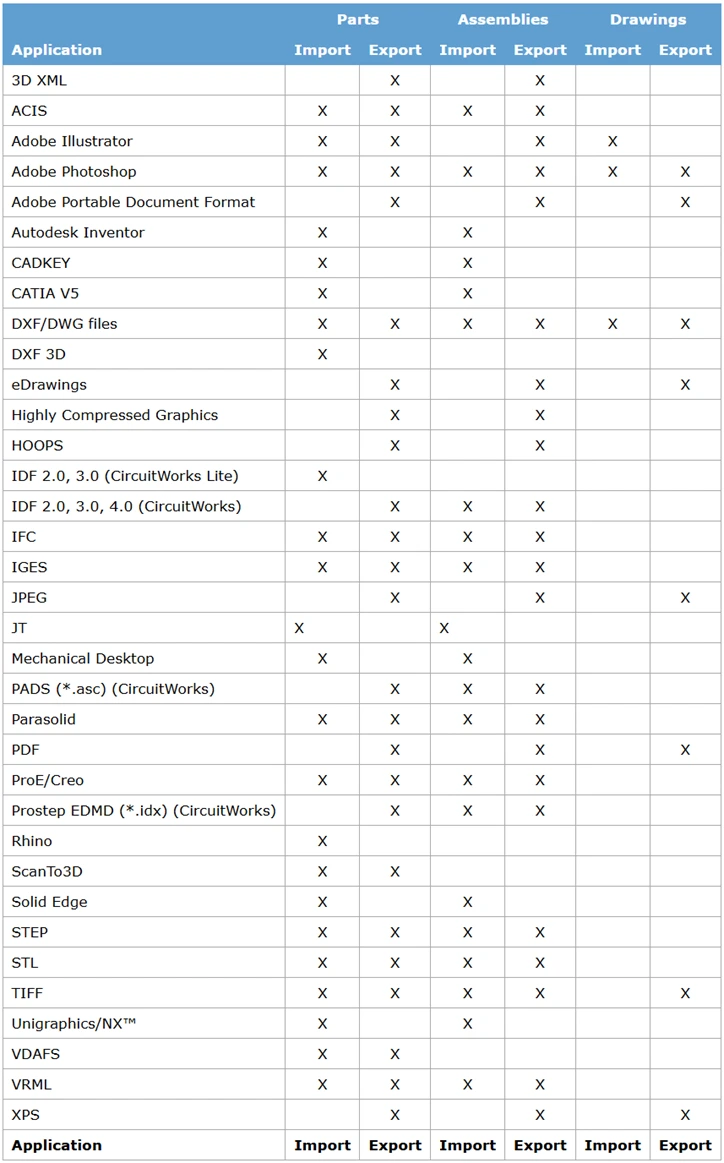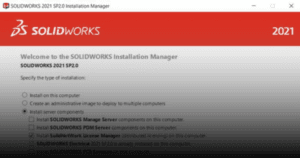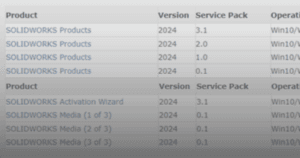SOLIDWORKS file formats play a critical role in ensuring smooth collaboration and compatibility in the design process. Whether you’re working with native CAD files or neutral exchange formats, knowing which file types are supported by SOLIDWORKS helps you avoid costly translation issues and maintain model integrity.
In many workflows, product models are imported from other CAD systems or from neutral formats such as STEP, IGES, or Parasolid.
The table below summarizes the wide range of SOLIDWORKS file formats you can work with:

Note: The CATIA® V5-SOLIDWORKS Translator is available with SOLIDWORKS Premium and SOLIDWORKS Ultimate.
Best Practices for Working with SOLIDWORKS File Formats
If you must use a neutral file format, Parasolid (.x_t, .x_b) is highly recommended. As the native modeling kernel for SOLIDWORKS, it allows for a direct read without translation—making it the most reliable choice for importing data.
If Parasolid is not available, STEP (.step, .stp) or ACIS (.sat) are better alternatives than IGES (.igs), especially for solid body translation.
If you encounter an issue while importing and exporting file formats in SOLIDWORKS, you may contact [email protected] for assistance.
If you want to learn more about common questions, you can browse the FAQ from SOLIDWORKS here.
If you found this helpful, we’d love for you to share it!



